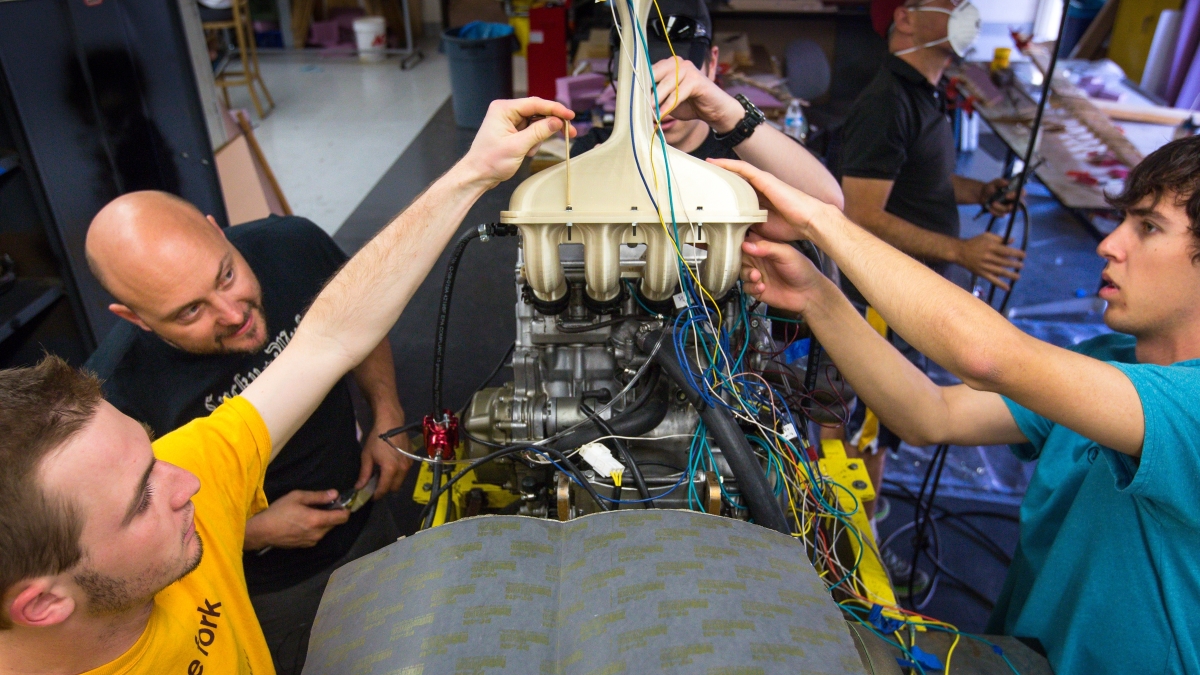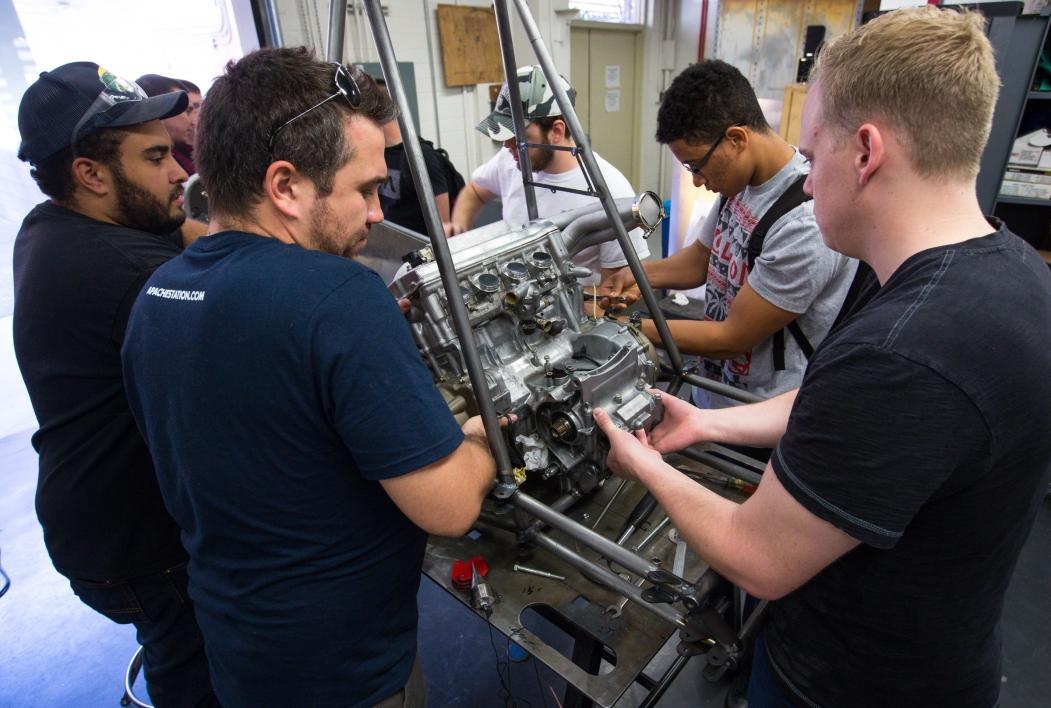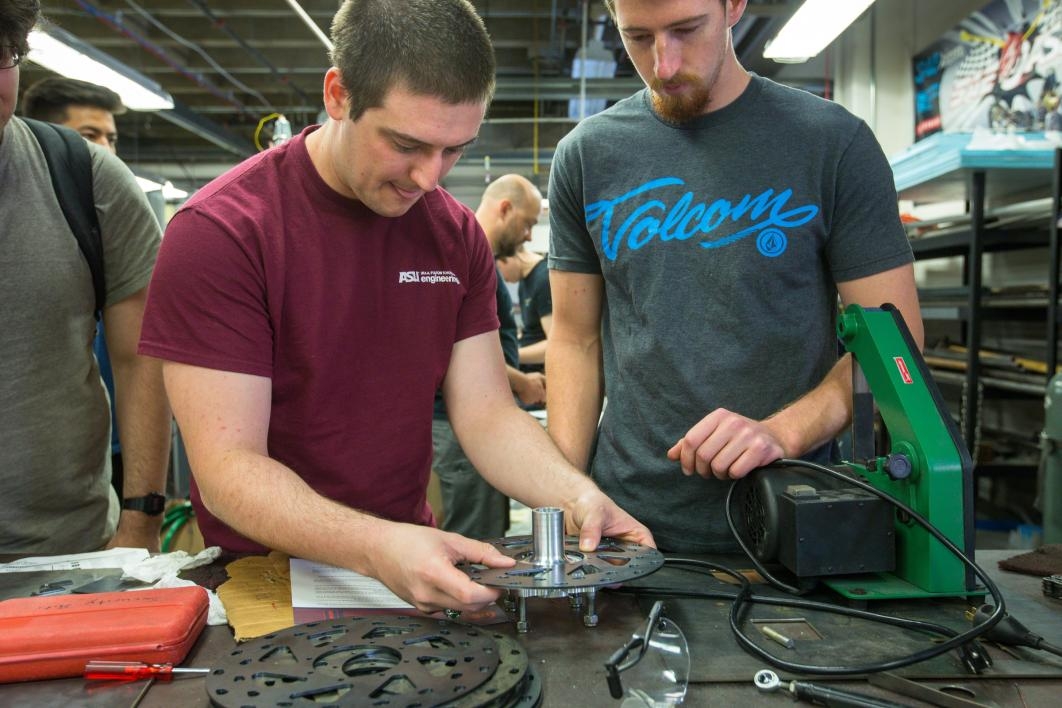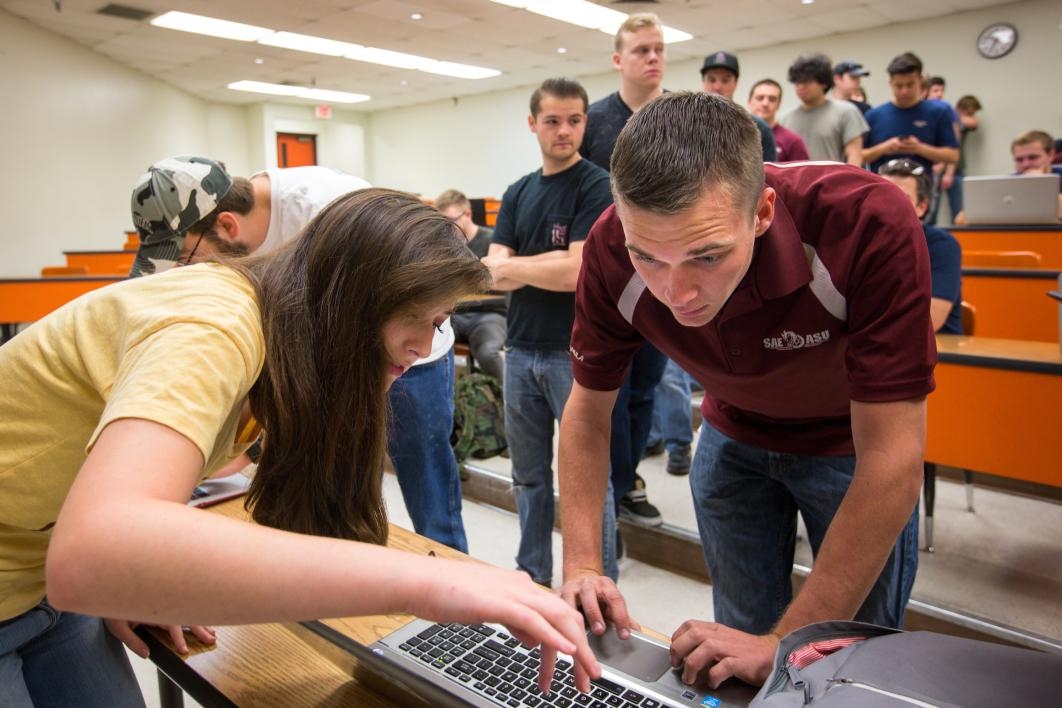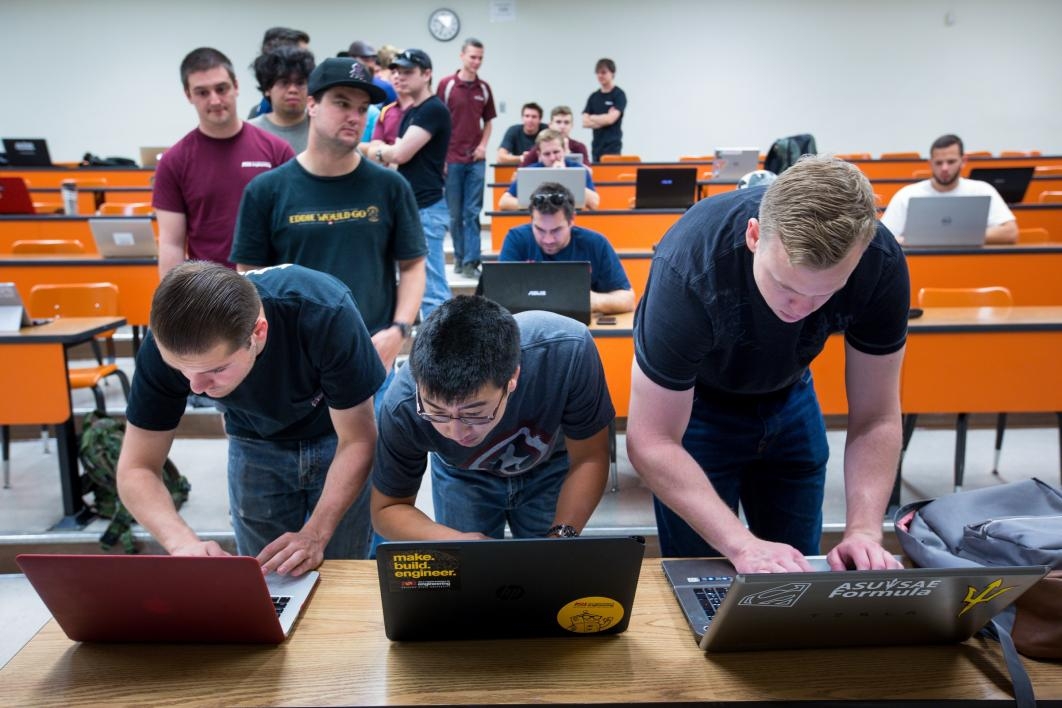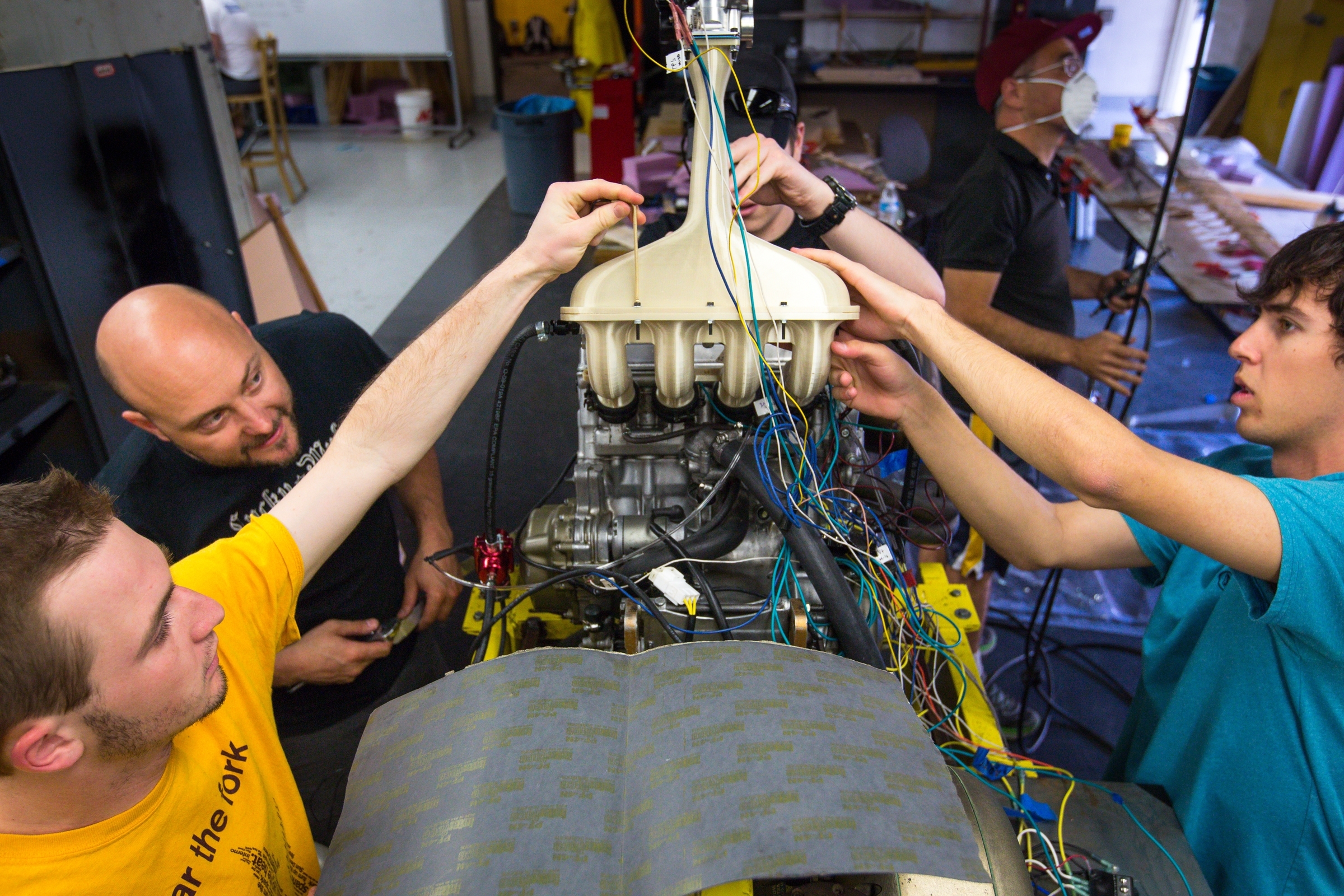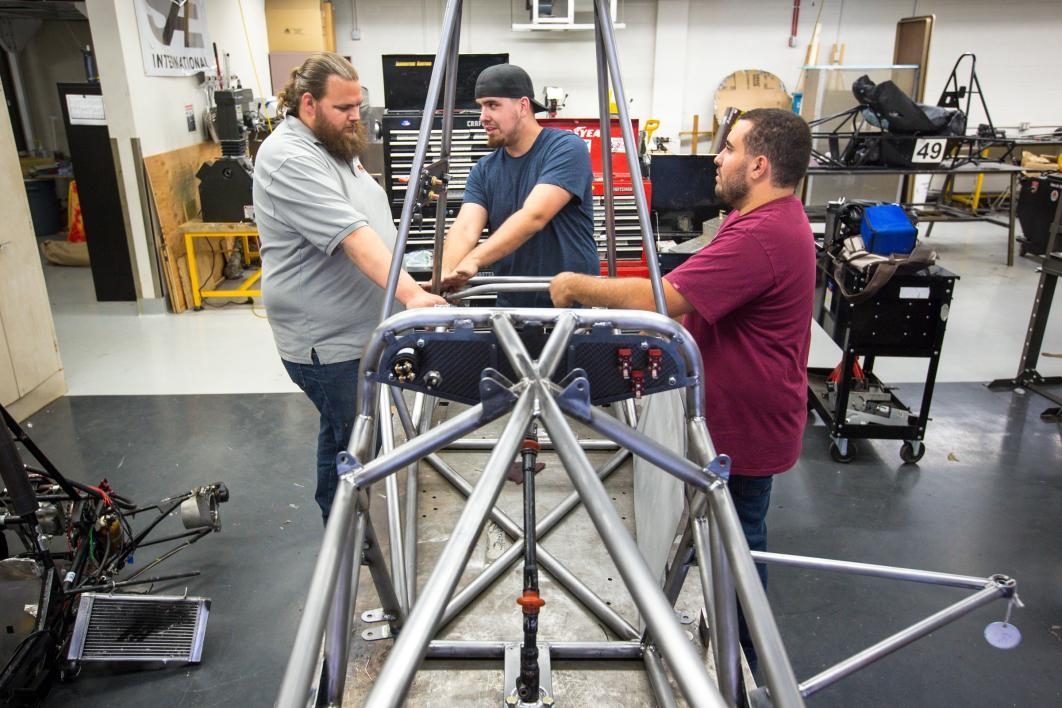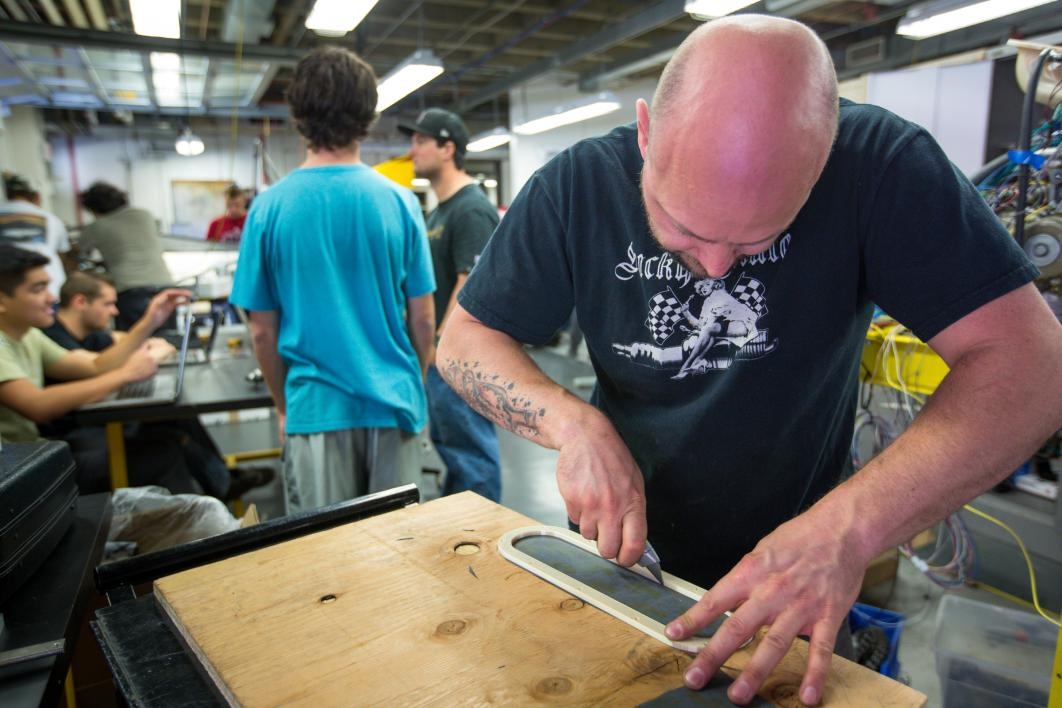Editor’s note: This is the latest installation in a yearlong series about ASU's Formula SAEFormula SAE is a student design competition organized by the International Society of Automotive Engineers (now known as SAE International). team. Find links to previous stories at the end of this article.
These are the times that try men’s souls.
While the student engineers building a Formula-style car for competition in June aren’t inspiring a revolution like Thomas Paine, they are battling the tensions that always accompany great struggles.
Infighting. Disagreements. Discord.
They’re not pretty, but they’re a feature of every one of man’s great accomplishments, from the Shackleton expedition’s escape from Antarctica to the launch of the Voyager spacecraft. To suggest otherwise would be disingenuous.
The pressure notched up March 18, when news arrived that the team had secured a $10 million insurance policy to drive the pace car lap at the Indy car races at Phoenix International Raceway on April 2.
Insurance requirements for either a pace car lap or a booth at the raceway had been insurmountable, so the team was resigned to missing the event. Now they were faced with turning a (mostly) completed engine, a completed chassis and a pile of components into a car.
In about two weeks.
The cry went out across email, for shop days, shop nights, shop afternoons: “WE NEED YOU!” “Shop Night TONIGHT!” “Shop Day for IndyCar event.”
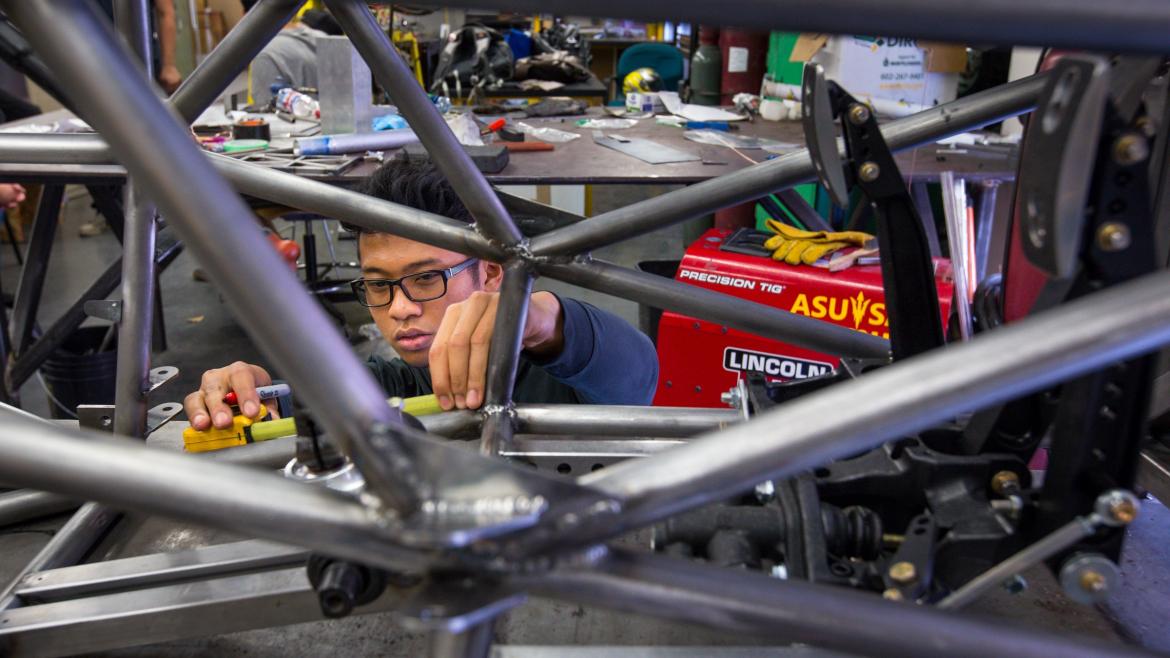
Gede Andiyastika measure segments of the frame for welding tabs to connect the underbody tray on March 30 in Tempe.
Photo by Charlie Leight/ASU Now
Since the announcement about the insurance, the team has been working to complete eight major tasks, each of which has countless sub-tasks. About 10 to 20 team members have been in the shop every night.
“I honestly had a hard time making sure I say the right things correctly,” chief engineer Wes Kudela said last Saturday. “It’s hard to motivate people to make the final push.”
With a huge raceway appearance and a $10 million insurance policy in hand, “we expected people to be fired up,” said Kudela, a senior in mechanical engineering. Leap Carpenter Kemps provided the insurance, at no cost to the team. “We owe these people our 100 percent effort.”
The abrupt deadline has caused tension between the leadership and the team, both admit. A deadline like this is going to cause issues in any endeavor, no matter how well it’s going, and that’s not taught in any classroom.
“Not what I was hoping to tell you at this point,” said team manager Troy Buhr, a junior in mechanical engineering. “I can’t tell you otherwise.”
Sub team leaders said getting the car running in two weeks was unrealistic, with the team divided on their chances.
Everyone has been making sacrifices. A tough challenge is made even tougher by the fact that team members have classes and jobs on the side. Spare time, recreation, relaxation — these are pipe dreams.
“In between classes I’ll either be contacting companies to try and get parts or I’ll go to the shop to work on something,” said vehicle systems lead engineer Curtis Swift, a senior in mechanical engineering. “Also, there is definitely less sleep due to staying late at the shop or waking up early to get into the machine shop.”
Manufacturing and shop manager Arik Jacobson, a sophomore in automotive systems engineering, said he has been going without sleep.
“Sleep has been the majority of the sacrifice since I still have class plus I have a job and Formula to attend to,” he said. “We have put some projects on hold until we get the car to the event.”
“As the Grand Prix approaches a lot of my relaxation time starts becoming ‘build racecar time,’” said brake team leader Colin Twist, a junior in mechanical engineering. “Which isn’t necessarily a bad thing.”
The engine is mounted and headers from the old car have been mounted for the raceway appearance.
“There’s a lot of that going on,” Buhr said. “Scrapping stuff from the old car.”
“This’ll help us out later, figuring out placement,” said team captain Pranav Mamidi, a senior in mechanical engineering. “It speeds up the process later significantly. ... There’s something we’ve learned working about cars. Nothing ever goes to plan. ... Our goal is competition, not (the raceway appearance).”
There is a fair amount of mocking up assemblies on the car, Swift said.
“We have to hurry and get everything finished for PIR so even if we don’t have the parts yet we still have to figure out how everything will fit and mount into the car, which makes things difficult,” he said.
Jacobson said they are doing their best to ensure 100 percent quality. No corners are being cut anywhere.
“The motto in our shop is, ‘Aim for perfection’ and we realize that we are learning and this means we shoot for the absolute best result and a lot of the times we get really close and we accept that and learn from each experience,” he said. “There have been some temporary tabs put on the car, but we have plans to try and integrate those into the final design. We are in no way cutting any corners to our end product.”
Kudela said whatever happens, he will be proud of the team and the results they have to show at the raceway on Saturday.
“Whatever we pull off at this point, we have something pretty incredible to show at the team booth,” he said.
Find the group's PitchFunder page here: https://asu.useed.net/projects/438/home.
Previous stories in this series:
Oct. 14: Tempe Drift: How an underdog student engineering team is building a race car from the ground up.
Nov. 4: Racing time and money to build a fast car.
Dec. 10: Braking bad: Pressure is on for ASU student engineers building race car
Dec. 17: No brake: ASU team powers through to edge closer to race car
Feb. 1: Coming into the home stretch
March 8: Starting to look like a car
March 29: One step closer to PIR
More Science and technology
Extreme HGTV: Students to learn how to design habitats for living, working in space
Architecture students at Arizona State University already learn how to design spaces for many kinds of environments, and now they can tackle one of the biggest habitat challenges — space architecture…

Human brains teach AI new skills
Artificial intelligence, or AI, is rapidly advancing, but it hasn’t yet outpaced human intelligence. Our brains’ capacity for adaptability and imagination has allowed us to overcome challenges and…

Doctoral students cruise into roles as computer engineering innovators
Raha Moraffah is grateful for her experiences as a doctoral student in the School of Computing and Augmented Intelligence, part of the Ira A. Fulton Schools of Engineering at Arizona State University…
